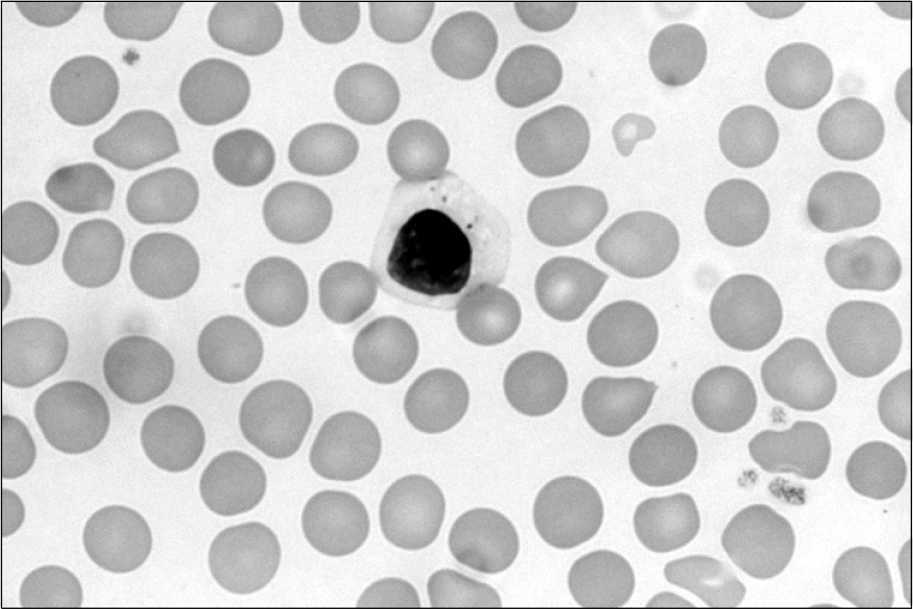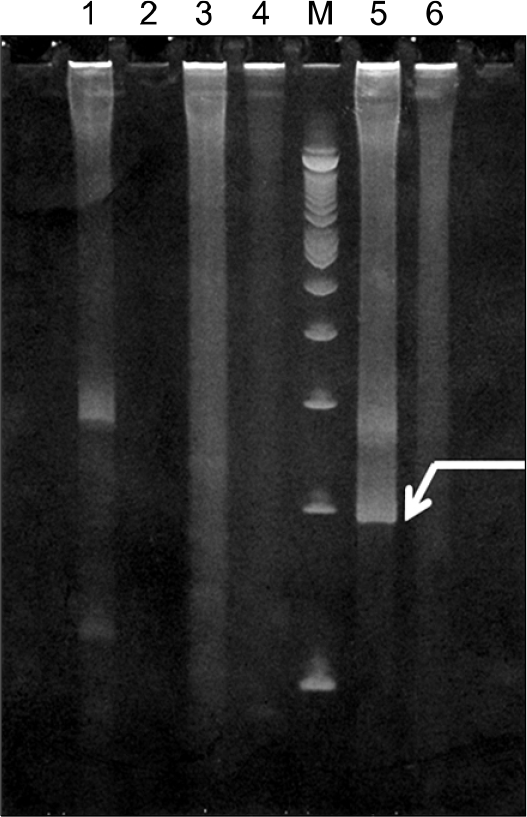Abstract
T cell large granular lymphocytic leukemia (T-LGL leukemia) is defined as a clonal proliferative disorder of CD3+ cytotoxic T cells. T-LGL leukemia usually expresses CD3+, CD4-, CD8+, CD16+, CD56- and CD57+ cell markers, and this represents a rearrangement of the T cell receptor (TCR) gene. The clinical course is indolent in most cases, but on rare occasions, when CD3+ and CD56+ are expressed on the leukemic cells, it can be more aggressive. We experienced a patient with T-LGL leukemia and the disease was indolent at the time of diagnosis, and so any specific treatment was not required. Two years after the initial diagnosis, her clinical course became quite aggressive as the CD 56+ cell surface antigen was expressed. We report here on the first case of T-LGL leukemia in Korea and we review the relevant literature.
References
1. Loughran TP Jr, Kadin ME. Large granular lymphocytic leukemia. Beutler E, Lichtman MA, Coller BS, Kipps TJ, Seligsohn U, editors. Williams hematology. 6th ed.United state of ameica: Mc-Graw-Hill;2006. p. 1203–5.
2. Loughran TP Jr, kadin ME, Starkebaum G, et al. Leukemia of large granular lymphocytes: association with clonal chromosomal abnormalities and autoimmune neutropenia, thrombocytopenia, and hemolytic anemia. Ann intern Med. 1985; 102:169–75.

3. Lamy T, Loughran TP Jr. Clinical features of large granular lymphocyte leukemia. Semin hematol. 2003; 40:185–95.

4. Lee HJ, Park SJ, Park SE, et al. A case of natural killer-large granular lymphocyte (NK-LGL) leukemia. Korean J Hematol. 2001; 36:269–73.
5. Sokol L, Loughran TP Jr. Large granular lymopho-cyte leukemia. Oncologist. 2006; 11:263–73.
6. Horiuchi T, Hirokawa M, Satoh K, Kitabayashi A, Muira AB. Clonal expansion of gammadelta-T lymphocytes in an HTLV-I carrier, associated with chronic neutropenia and rheumatoid arthritis. Ann Hematol. 1999; 78:101–4.
7. Vartholomatos G, Alymara V, Dova L, Kolaitis N, Bourantas KL. T-cell receptor gammadelta-large granular lymphocytic leukemia associated with an aberrant phenotype and TCR-Vbeta20 clonality. Hematologica. 2004; 89:52–4.
9. Gentile TC, Uner AH, Hutchison RE, et al. CD3+ CD56+ aggressive variant of large granular lymphocyte leukemia. Blood. 1994; 84:2315–21.
10. Alekshun TJ, Tao J, Sokol L. Aggressive T-cell large granular lymphocyte leukemia: a case report and review of the literature. Am J Hematol. 2007; 82:481–5.

11. Raspadori D, Damiani D, Lenoci M, et al. CD56 antigenic expression in acute myeloid leukemia identifies patients with poor clinical prognosis. Leukemia. 2001; 15:1161–4.

12. Chang H, Salma F, Yi QL, Patterson B, Brien B, Minden MD. Prognostic relevance of immunophenotyping in 379 patients with acute myeloid leukemia. Leuk Res. 2004; 28:43–8.

13. Suzuki R, Kagami Y, Takeuchi K, et al. Prognostic significance of CD56 expression for ALK-positive and ALK-negative anaplastic large-cell lymphoma of T/null cell phenotype. Blood. 2000; 96:2993–3000.
14. Macon WR, Williams ME, Greer JP, et al. Natural killer-like T-cell lymphomas: aggressive lymphomas of T-large granular lymphocytes. Blood. 1996; 87:1474–83.
15. van Steensel MA, van Gelder M, van Marion AM, Kremer B, Frank J. T-cell large granular lymphocytic leukaemia with an uncommon clinical and immunological phenotype. Acta Derm Venereol. 2009; 89:172–4.
Fig. 1.
Peripheral blood smear showing a large granular lymphocyte with intracytoplasmic azurophilic granules (Wright stain, ×100).

Fig. 2.
(A) Bone marrow aspiration smear showing several large granular lymphocytes (Wright stain, ×1,000). (B) Bone marrow biopsy showing several clumps of large granular lymphocytes (H&E stain, ×40).

Fig. 3.
Nested polymerase chain reaction for TCRγ gene rearrangement by assay targeting all the functional Vγ and Jγ gene segments. Lane 1, 3, 4 and 6 represents negative controls. Lane 5 is the result of this patient and represents TCRγ gene rearrangement from large granular lymphocyte leukemia (190 bp) (white arrow). Lane 2 is empty. M, molecular weight marker.

Table 1.
Immunophenotyping result




 PDF
PDF ePub
ePub Citation
Citation Print
Print


 XML Download
XML Download